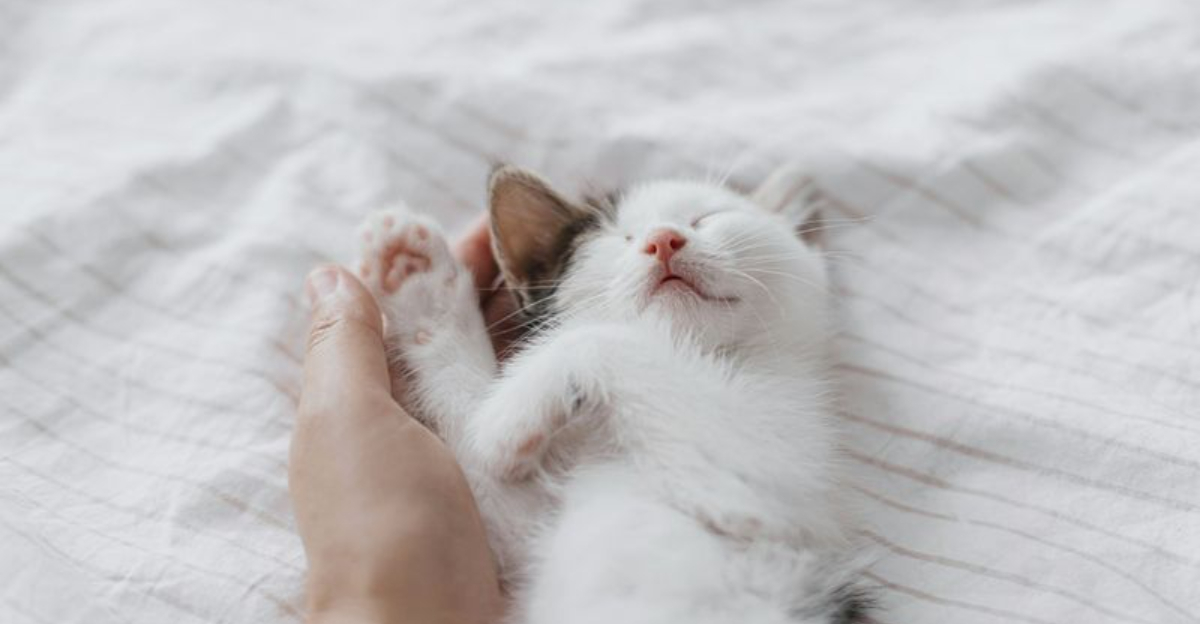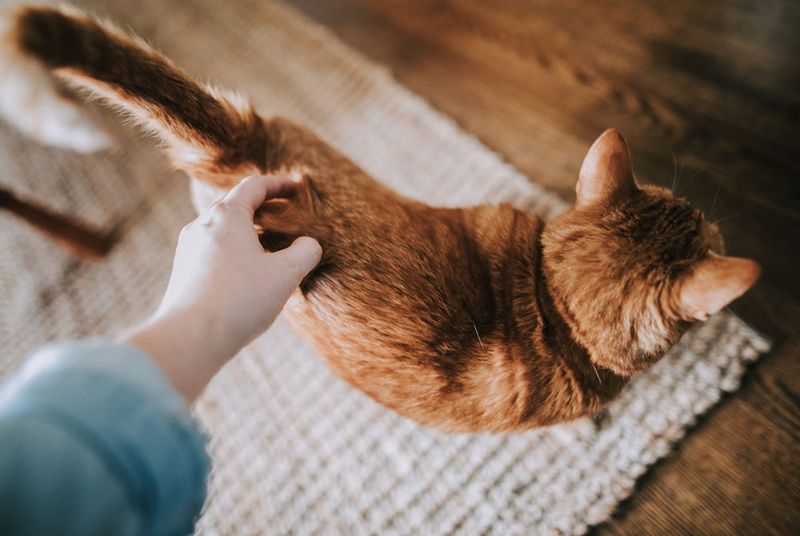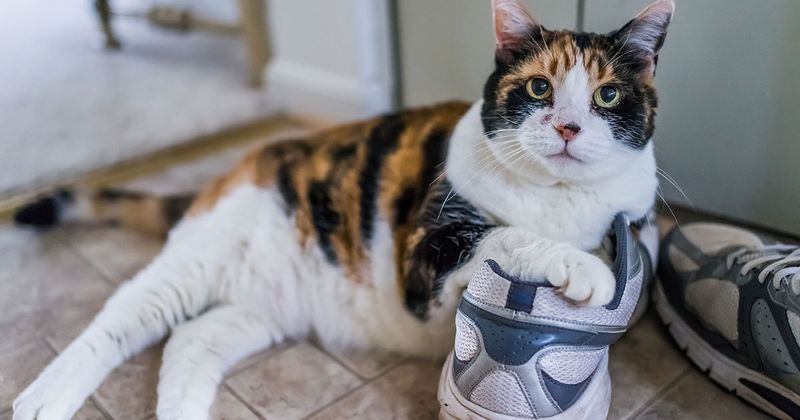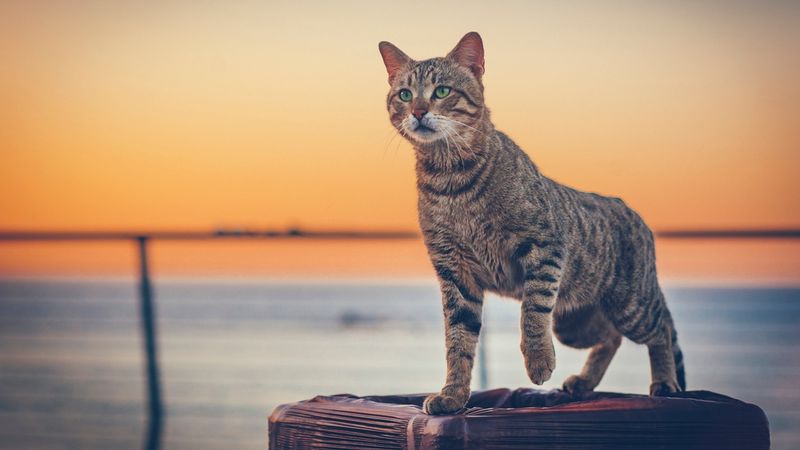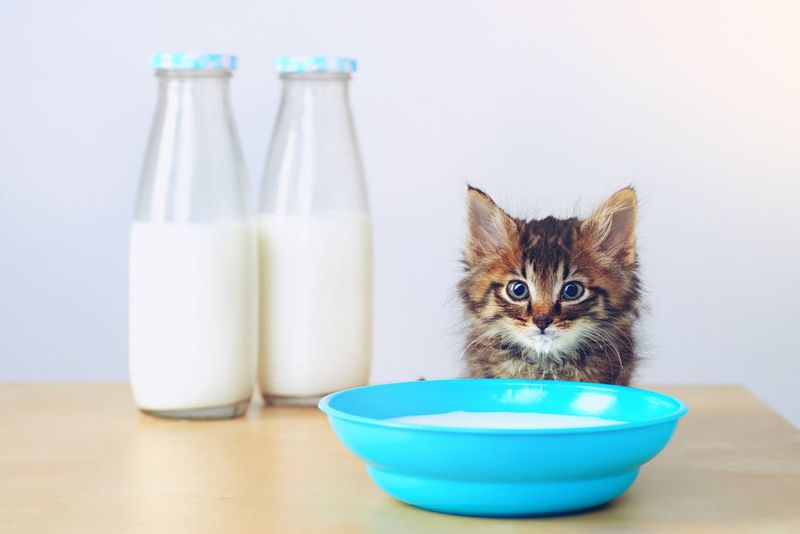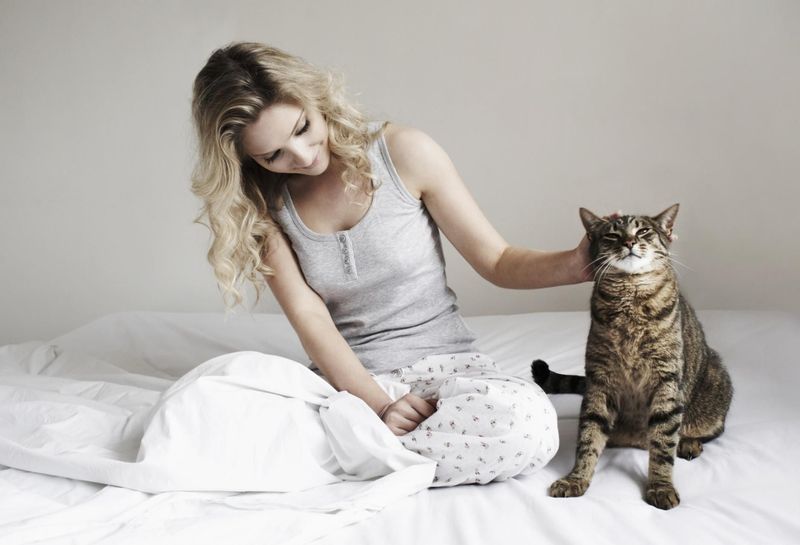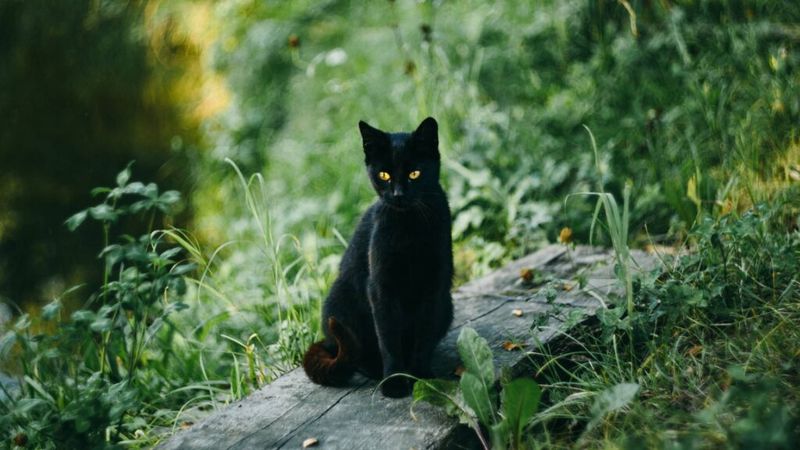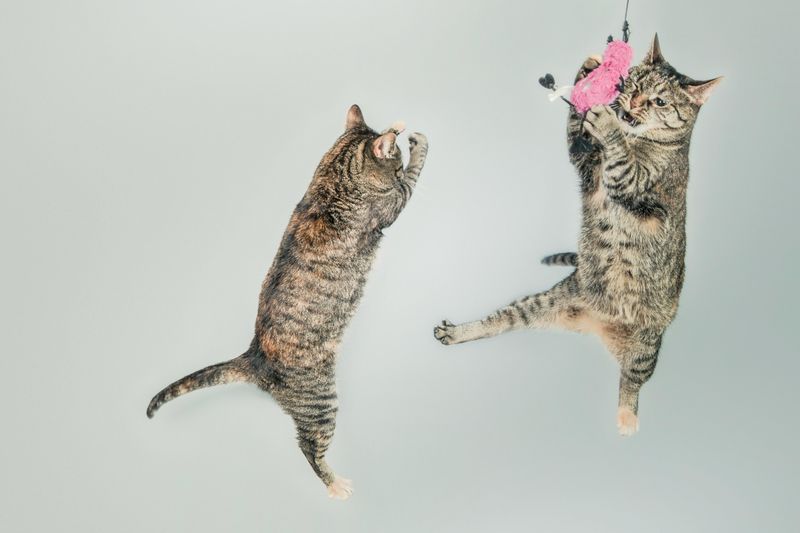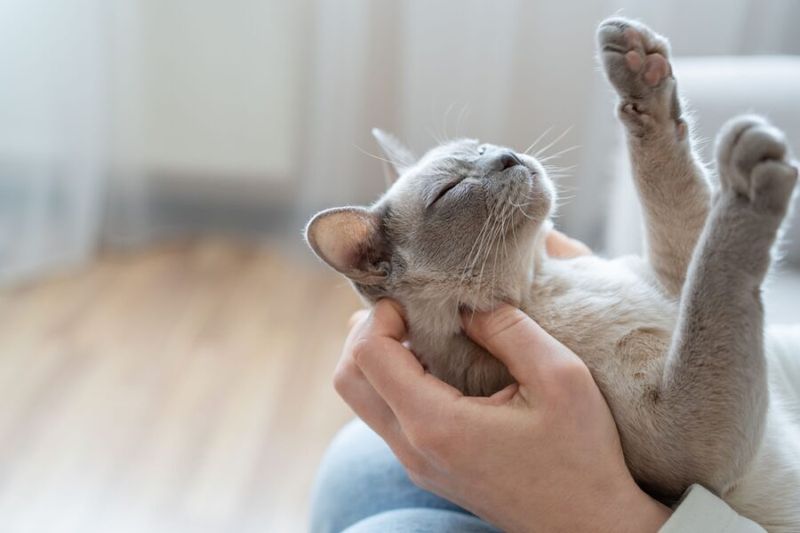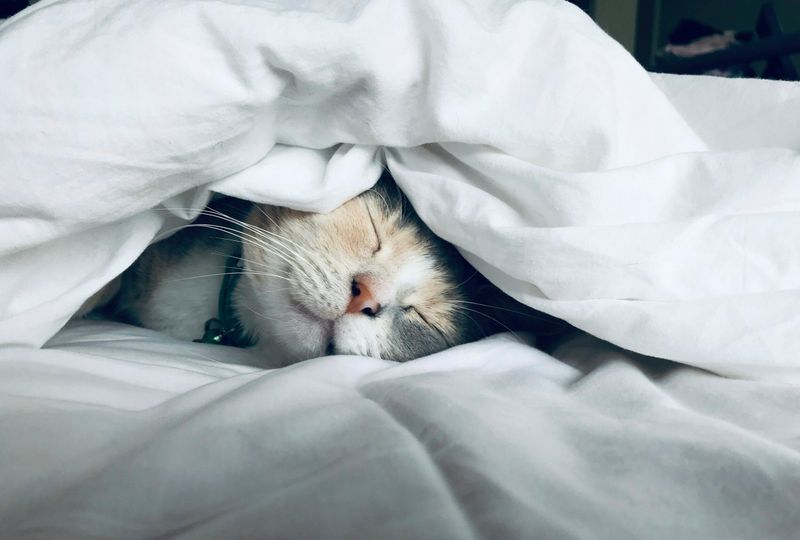📖 Table of Content:
- 1. A Cat’s Tail Wag Means They’re Friendly
- 2. Indoor Cats Don’t Need Vet Visits
- 3. Cats Only Purr When They’re Happy
- 4. Cats Are Nocturnal Hunters
- 5. Milk Is a Perfect Treat for Cats
- 6. Cats Can’t Be Trained
- 7. Black Cats Bring Bad Luck
- 8. Cats Always Land on Their Feet
- 9. Cats Are Cold and Anti-Social
- 10. You Can Just Leave Cats Alone for Days
From the notion that cats are aloof and solitary to the myth that they can live happily without any interaction for days, these feline fallacies often distort our understanding of our whiskered companions. What begins as a cute tale or old wives’ saying can often become a long-standing belief, affecting how we treat and interpret feline behavior.
These myths aren’t just harmless stories — they can influence how people adopt, care for, or even abandon their pets. Believing, for instance, that cats don’t need regular vet visits could lead to untreated illnesses, while thinking black cats are bad luck can tragically decrease their adoption rates. By confronting and dismantling these myths, we pave the way for healthier, more meaningful relationships with our feline friends.
Whether you’re a lifelong cat enthusiast or someone simply curious about the truth behind common beliefs, this list is for you. We’ve gone beyond the typical internet myths to bring you a fresh set of misconceptions — some quirky, some shocking, but all totally false. Here’s a deep dive into ten myths that deserve to be retired for good.
1. A Cat’s Tail Wag Means They’re Friendly
Contrary to what dog lovers may assume, a wagging cat tail does not always signal friendliness. In fact, it’s often the opposite. A twitching or lashing tail typically means the cat is overstimulated, annoyed, or on edge. This kind of body language serves as an early warning system: keep your distance, or you might get swatted. While some gentle tail swishes can accompany playfulness, sharp or repetitive movements are signs of agitation. Misreading these signals can strain the human-cat relationship, especially if the cat feels disrespected or unsafe. To understand your cat better, it’s crucial to read the tail in tandem with ears, eyes, and posture.
2. Indoor Cats Don’t Need Vet Visits
Assuming indoor cats live in a health bubble is a common — and dangerous — mistake. Just because they’re safe from cars and predators doesn’t mean they’re immune to illness. Conditions like diabetes, kidney disease, dental infections, and obesity often develop silently. Indoor cats can also suffer from parasites or behavioral issues that require professional attention. Routine vet checkups are essential for catching problems early, updating vaccinations, and ensuring mental and physical wellness. Skipping these appointments may save money short-term, but it could cost you more in emergency care later. Think of regular vet visits as preventive maintenance — your cat will thank you for it.
3. Cats Only Purr When They’re Happy
At first glance, a purring cat appears to be the very picture of peace and contentment. But beneath that soothing rumble lies a more complex emotional language. Scientists have discovered that cats also purr in moments of stress, illness, or pain — even during the final hours of life. Rather than always signifying joy, purring is believed to serve a therapeutic role, helping cats calm themselves and potentially heal. This insight shifts the narrative completely: purring may sometimes be a cat’s version of self-medication. So, when your feline friend purrs while hiding or avoiding food, it could be a red flag rather than a sign of happiness. Always consider context — a purr isn’t a one-size-fits-all emotional cue.
4. Cats Are Nocturnal Hunters
Though they sometimes appear like creatures of the night, cats aren’t truly nocturnal. Instead, they are crepuscular, meaning they’re most active during dawn and dusk. This natural rhythm aligns with their wild ancestors’ hunting patterns, which favored low light for stalking prey. If your cat wakes you at sunrise or starts zooming at twilight, now you know why. Understanding this cycle helps explain why late-night hyperactivity isn’t necessarily misbehavior. It also gives insight into feeding and playtime schedules that align with their instincts. Rather than fighting their rhythms, work with them to create a stimulating environment that supports these energy bursts.
5. Milk Is a Perfect Treat for Cats
Images of kittens lapping up milk are practically stitched into pop culture, but they’re far from reality. Most adult cats are lactose intolerant — their digestive systems simply can’t handle the sugar in milk. Giving them a saucer of dairy can lead to upset stomachs, diarrhea, and dehydration. Despite this, many still treat milk as a wholesome snack. While some cats may tolerate specially formulated “cat milk,” regular cow’s milk is best avoided. Water should always be the go-to drink, and treats should be vet-approved. Don’t let charming cartoons dictate your cat’s diet.
6. Cats Can’t Be Trained
It’s often said that cats do what they want, when they want — and while that’s partly true, it doesn’t mean they can’t learn. Training a cat just takes a different mindset than training a dog. Positive reinforcement using treats, clickers, and consistency can yield impressive results. From basic commands like “sit” to complex behaviors like jumping through hoops or using a litter robot, cats are capable learners. The key is understanding their motivation: food and play usually win over discipline. Labeling cats as “untrainable” limits their potential and your bond with them. With patience and creativity, you might be surprised at what your feline can do.
7. Black Cats Bring Bad Luck
It’s a superstition steeped in medieval fear and cultural bias — one that’s still tragically affecting adoption rates today. Black cats were once believed to be witches’ companions or omens of doom, especially in Europe. However, in other cultures, such as Japanese and Scottish traditions, black cats are considered lucky and protective. These creatures are no different in temperament or health than their more colorful counterparts. Judging them based on fur color alone is both illogical and unfair. Shelters often report that black cats are the last to be adopted, despite their stunning beauty and charm. Let’s ditch the fear and embrace the sleek elegance of these misunderstood felines.
8. Cats Always Land on Their Feet
The “righting reflex” is real — but it’s not magic. Cats do have an amazing ability to twist mid-air and land feet-first, thanks to their flexible spines and strong inner ear balance. However, this doesn’t mean they’re invincible. Falls from high windows or balconies (a phenomenon known as “high-rise syndrome”) can result in broken bones or worse. Ironically, cats falling from shorter heights may fare worse because they don’t have time to orient themselves. Pet-proofing high places and keeping windows screened is essential, especially in apartments. The myth may be charming, but gravity still applies to cats.
9. Cats Are Cold and Anti-Social
Not every cat is a lap-warmer, but that doesn’t mean they don’t crave connection. Felines often express affection through subtle behaviors: following you from room to room, gently head-butting your legs, or curling near you during naps. Unlike dogs, cats tend to bond in quieter, more nuanced ways. Socialization plays a big role — cats raised in loving, interactive environments are often more outgoing. Labeling them as “cold” ignores their emotional intelligence and desire for companionship. In fact, many cats experience separation anxiety or boredom when left alone too long. Understanding their love language deepens your bond with them.
10. You Can Just Leave Cats Alone for Days
They may be more independent than dogs, but cats still need daily care and human interaction. Leaving them alone for extended periods without proper food, water, and companionship can cause stress or even health problems. Litter boxes overflow, boredom sets in, and behavioral issues may emerge. Automatic feeders and cameras can help, but they don’t replace human presence. Cats benefit from routine, playtime, and emotional connection. Treating them like furry houseplants misses the point entirely. If you must be away, a trusted pet sitter or temporary caregiver is a must.
